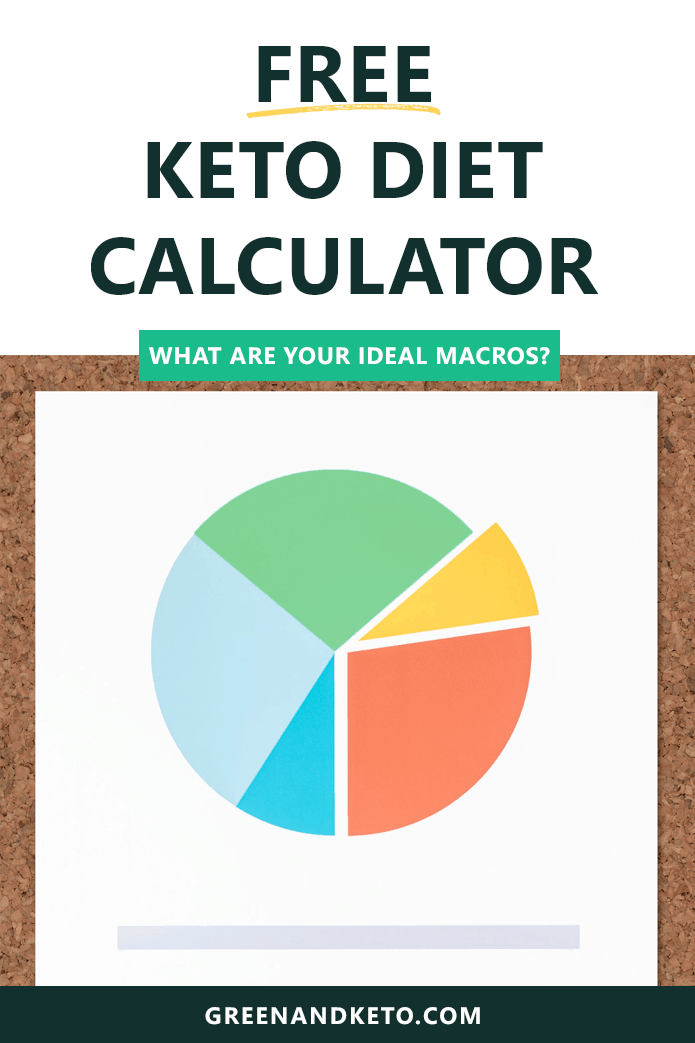The keto diet is a meticulously planned eating strategy that goes beyond mere carbohydrate restriction. It necessitates a careful balance of macronutrients—fats, proteins, and carbohydrates—to successfully induce ketosis and foster weight loss.
Our Keto Macro Calculator is designed to simplify the calculation of your personal macronutrient needs, by providing personalized recommendations based on your specific goals, body composition, and lifestyle. Discover your ideal keto macros and take the first step towards a customized journey to weight loss today — scroll directly to the calculator.

What is Keto?
The ketogenic diet — or the keto diet — is a high-fat, moderate-protein, and low-carb way of eating. It’s referred to by many different names – ketogenic diet, low carb diet, low carb high fat (LCHF), etc. Eating low carb puts your body in a metabolic state called ketosis. When your body is “in ketosis”, it burns fat for energy instead of carbohydrates.
But, what kinds of food do you eat in order to have a diet high in fat, while low in carbs?
The nutritional recommendations boil down to this: eat fewer starchy and sugary carbohydrates (like sweets, bread, and potatoes); and instead eat more green veggies, meats, and healthy fats. Simple!
What are Keto Macros?
“Macros” is short for macronutrients. There are three primary types of macronutrients: fat, protein, and carbohydrates. These macronutrients are found in all foods in varying amounts.
Sweet and starchy foods like bread, potatoes, rice, and desserts have high amounts of carbohydrates. Foods like chicken breast, beef, and eggs have high amounts of protein. Foods like avocado, peanut butter, and olive oil have higher amounts of fat.
How Many Carbs Should You Eat on Keto?
Most experts agree that you will be able to achieve nutritional ketosis is you eat less than 20 net carbs a day. When you first start out on the keto diet, it’s a good idea to track your carb intake to make sure you stay under this 20 carb/day limit.
Net carbs are the grams of total carbohydrates in a food minus its grams of total fiber. Your body can’t digest fiber, so it doesn’t count toward your total.
Total Carbs – Total Fiber = Net Carbs
Most keto diets have a carb goal of 20 to 50 grams of carbs a day. Keep in mind that these goals mean net carbs.
Free Keto Macro Calculator
Ageyears
Weightstones lbs
Heightfeet inches
Body fat%
Net carbsgrams
Specify the amount of daily net carbs you'd like to consume. Typically, 20-30 grams is recommended to start with.
Results
Maintenance
Maintenance level is the level at which your weight remains stable.
| Your BMR is: | 1536 | kcal |
| Calories to consume: | 2027 | kcal |
| Your fat intake should be: | 184 | grams |
| Net Carbs | Protein | Fat | |||
| 25 | grams | 69 | grams | 184 | grams |
| 100 | kcal | 275 | kcal | 1653 | kcal |
| 5 | % | 14 | % | 81 | % |
Goal
Below is a range of calorie deficits to help you lose weight. For best results, it is recommended that you opt for a moderate calorie deficit of 10-20%.
Small calorie deficit (11%)
| Calories to consume: | 1804 | kcal |
| Your fat intake should be: | 159 | grams |
| Net Carbs | Protein | Fat | |||
| 25 | grams | 69 | grams | 159 | grams |
| 100 | kcal | 275 | kcal | 1430 | kcal |
| 6 | % | 15 | % | 79 | % |
Moderate calorie deficit (22%)
| Calories to consume: | 1581 | kcal |
| Your fat intake should be: | 134 | grams |
| Net Carbs | Protein | Fat | |||
| 25 | grams | 69 | grams | 134 | grams |
| 100 | kcal | 275 | kcal | 1207 | kcal |
| 6 | % | 17 | % | 77 | % |
Large calorie deficit (33%)
| Calories to consume: | 1358 | kcal |
| Your fat intake should be: | 109 | grams |
| Net Carbs | Protein | Fat | |||
| 25 | grams | 69 | grams | 109 | grams |
| 100 | kcal | 275 | kcal | 984 | kcal |
| 7 | % | 20 | % | 73 | % |
Important advice:
I am not a nutritionist or a doctor and this information is not meant to be given as medical advice. I’m just a fan of the keto diet — and I write this website to share my low carb recipes and resources. If you want to start eating keto, I encourage you to do further research and consult with your physician before starting this way of eating!
